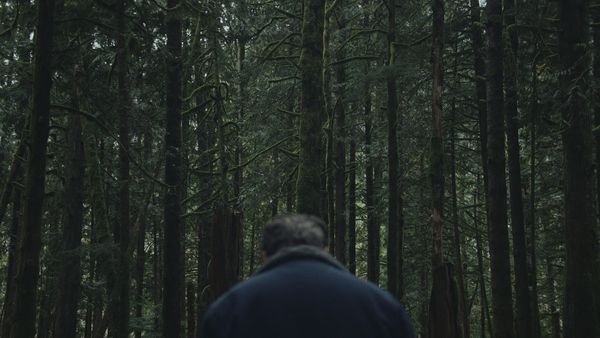Eye For Film >> Movies >> To Kill A Wolf (2024) Film Review
To Kill A Wolf
Reviewed by: Jennie Kermode

There are around 200 wolves in the forests of Oregon. They’re carefully managed, conserved. Some humans still try to kill them, but there’s little excuse: they don’t represent much of a threat. Out in the wild places, deep in the woods, there are much worse dangers.
When the Woodsman (Ivan Martin) finds Dani (Maddison Brown), she’s half dead from the cold. Lying on the ground, unconscious, frost clinging to her clothes. He carries her inside his cabin, wraps her up, gets some food and drink into her when she comes round. She tells him that she’s trying to get to her grandmother’s house, but it’s pretty clear that she’s hiding something.

It’s what one might call a fairytale beginning, not just because of the obvious allusions, but because it would be very easy to run into those woods and never find one’s way back to civilisation. Sometimes people feel the need to run anyway. It’s clear that whatever Dani has waiting for her back in civilisation, it’s not good, but the Woodsman is wary of getting involved. She’s hesitant to answer the questions he does ask – and vice versa. He, too, has secrets. He’s out in the middle of nowhere for a reason. Each of them has to face down their own wolf.
Mostly shot at close quarters, inside the Woodsman’s cabin or car or amid the trees, the film is heavy with shadows and mist and chill air. Its surfaces are heavily textured and scarred. One can almost smell the mouldering wood where strips of bark are peeled away or broken, and later old carpets and curtains will take on something of the same quality. Dani and the Woodsman both seem to belong to this world, as if it has already claimed them. They blend into its colours and textures, into its melancholy. Can their concern for one another prompt them to look differently at their own situations? Can they claw their way back to life before it’s too late?
Cinematographer Adam Lee has described this as an attempt to look beyond the simple narrative of Red Riding Hood, exploring more complex and conflicted human experiences. It still maintains elements of fairy tale form, and something of that style, but here magic is only possible when people reach out for it, or inspire it in one another. The film is careful not to offer us too much resolution, but it does make room for possibility.
Reviewed on: 05 Oct 2024















